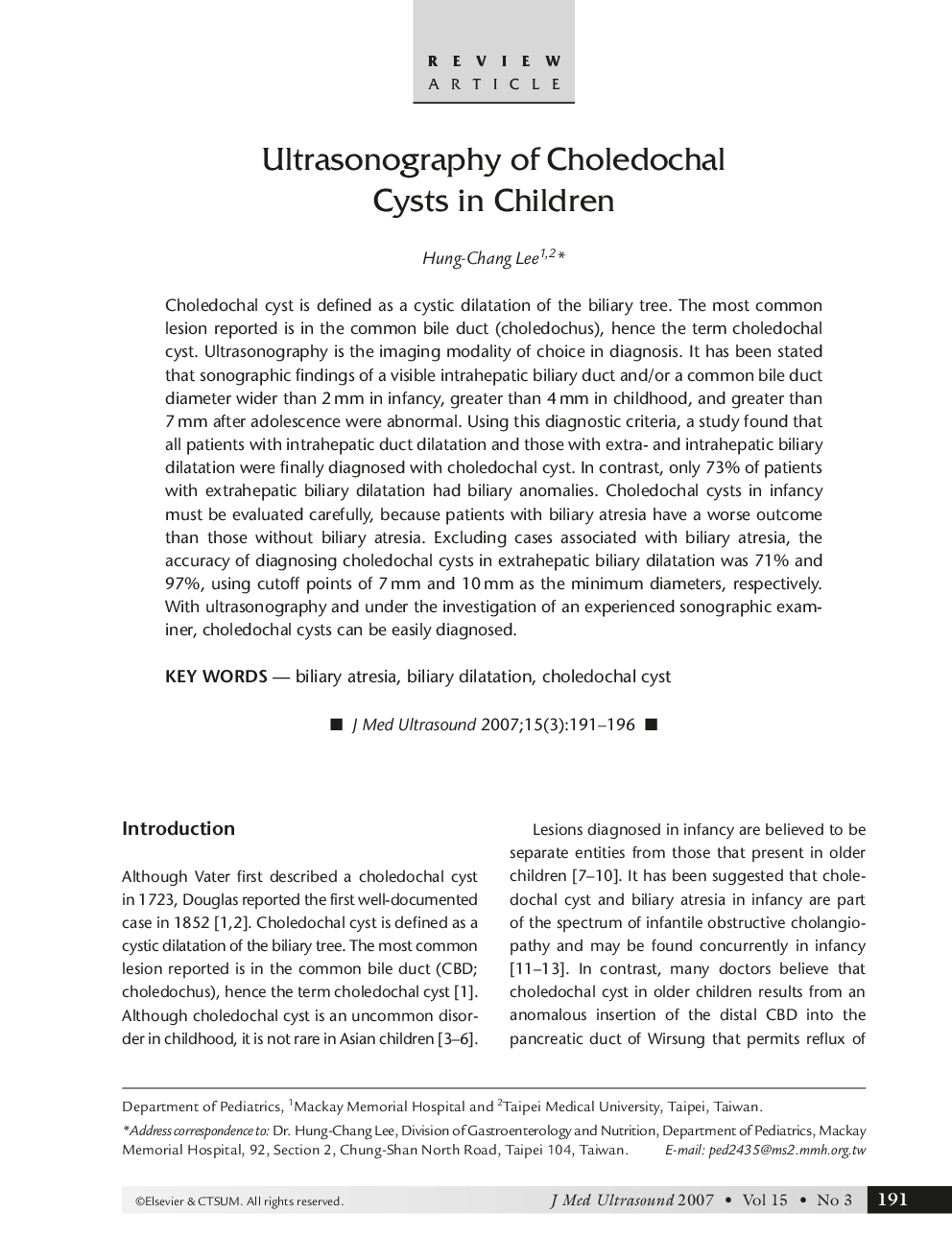| Article ID | Journal | Published Year | Pages | File Type |
|---|---|---|---|---|
| 4233193 | Journal of Medical Ultrasound | 2007 | 6 Pages |
Choledochal cyst is defined as a cystic dilatation of the biliary tree. The most common lesion reported is in the common bile duct (choledochus), hence the term choledochal cyst. Ultrasonography is the imaging modality of choice in diagnosis. It has been stated that sonographic findings of a visible intrahepatic biliary duct and/or a common bile duct diameter wider than 2 mm in infancy, greater than 4 mm in childhood, and greater than 7 mm after adolescence were abnormal. Using this diagnostic criteria, a study found that all patients with intrahepatic duct dilatation and those with extra- and intrahepatic biliary dilatation were finally diagnosed with choledochal cyst. In contrast, only 73% of patients with extrahepatic biliary dilatation had biliary anomalies. Choledochal cysts in infancy must be evaluated carefully, because patients with biliary atresia have a worse outcome than those without biliary atresia. Excluding cases associated with biliary atresia, the accuracy of diagnosing choledochal cysts in extrahepatic biliary dilatation was 71% and 97%, using cutoff points of 7 mm and 10 mm as the minimum diameters, respectively. With ultrasonography and under the investigation of an experienced sonographic examiner, choledochal cysts can be easily diagnosed.
